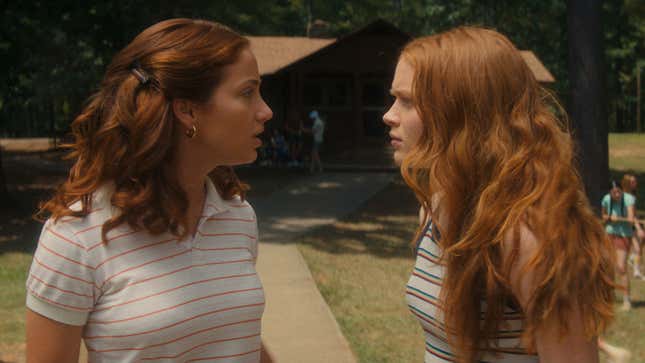Fear Street Part Two: 1978's Novel Respect for the Final Girl Trope
An endless playfulness when it comes to slasher genre conventions makes Fear Street Part Two: 1978 a cut above its influences
EntertainmentMovies

When news of yet another proposed reboot of the Friday the 13th franchise was announced in 2018, I jokingly wondered how the powers at be were going to make the entry woke. How could anyone take a series that has reveled in nihilism while effectively arguing for the inherent entertainment in seeing anonymous teen characters get hacked to bits, and translate it to work in a modern context for an audience that demands a more sensitive and compassionate approach? By exploring Halloween Final Girl Laurie Strode’s decades-long trauma, David Gordon Green and Danny McBride did so for that franchise and in the process made piles of money. But Friday the 13th has always been dumber and meaner, and at any rate, the brazen misanthropy that characterized a lot of ‘70s and ‘80s horror just wouldn’t fly today, not at least without the veneer of social consciousness. Whether out of the goodness of one’s heart or pure market-driven cynicism, the contemporary trash monger needs to give audiences an excuse for indulging in cinematic junk food.
Leigh Janiak’s Fear Street Part Two: 1978 has it all figured out. An equally enjoyable followup to the Netflix franchise’s Part One: 1994, the sequel is a spiritual continuation of the Friday the 13th franchise, it’s just that the names have been changed. Instead of Camp Crystal Lake, Fear Street’s is Camp Nightwing, and instead of an axe-wielding murderer named Jason Voorhees, Nightwing’s resident terrorist is Tommy, an eventually masked, possessed counselor (in Part One, he was referred to as the Camp Nightwing Killer). Fear Street Part Two: 1978, which Janiak adapted from R.L. Stine’s YA book franchise alongside co-writer Phil Graziadei, is more exacting than your average Friday movie. Whereas that franchise just sort of left Jason’s zombie status unexplained and inscrutable, Part Two: 1978 details the legend through which Tommy was possessed: A witch’s curse that affects many residents of the Fear Street setting of the depressed Shadyside, in a rather pronounced metaphor for class in America. In some ways, Part Two: 1978 manages to be more brutal than Friday ever did, as well: Generally the Friday the 13th movies were set at camp in the days before any of the campers arrived, so it was just counselors getting hacked up. Not so here—Tommy goes after and in fact kills children.
-

-

-

-

-

-

-

-

-

-

-

-

-

-

-

-

-

-

-

-

-

-

-

-

-

-

-

-

-

-

-

-

-

-

-

-

-

-

-

-








































